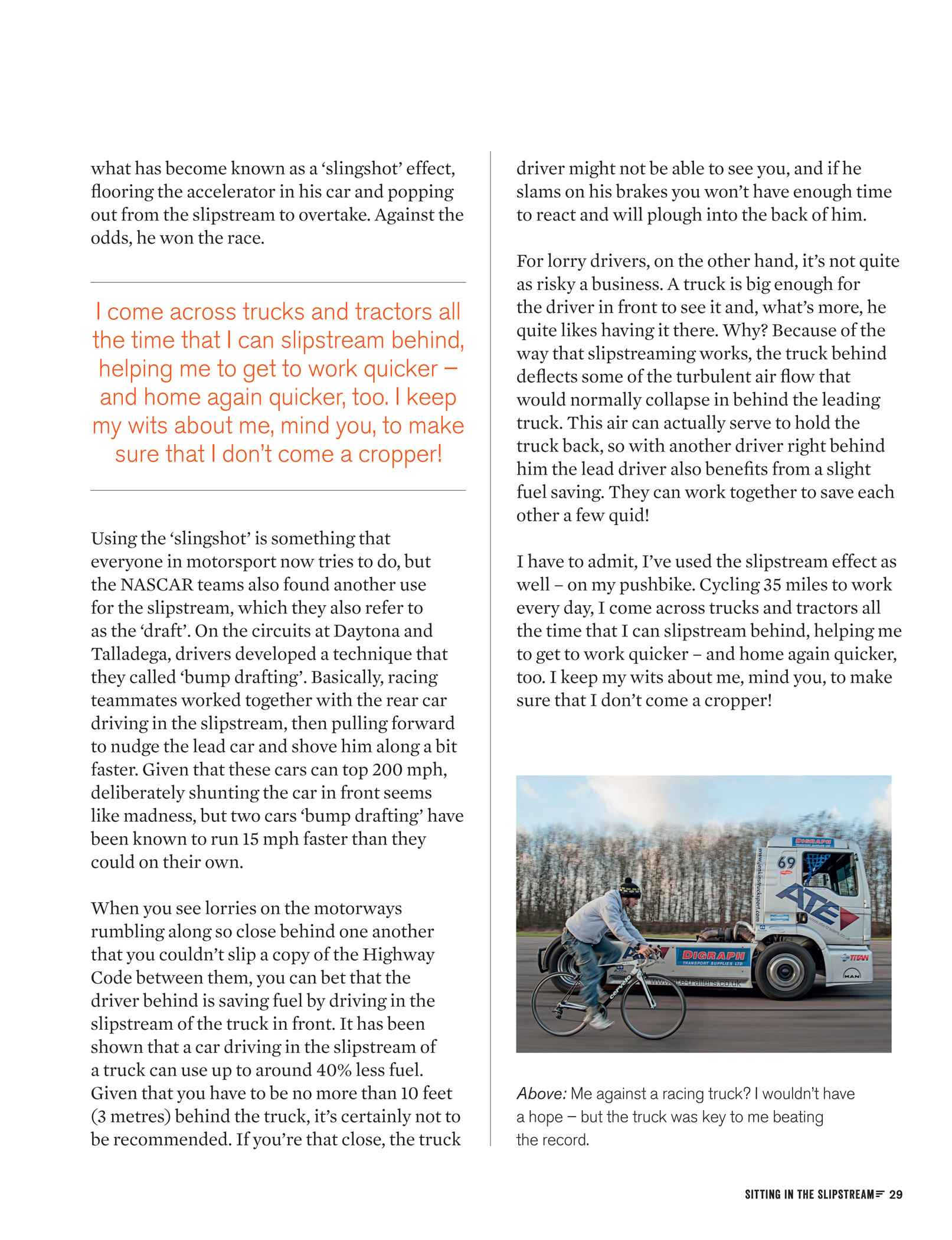
what has become known as a ‘slingshot’ effect,
flooring the accelerator in his car and popping
out from the slipstream to overtake. Against the
odds, he won the race.
I come across trucks and tractors all
the time that I can slipstream behind,
helping me to get to work quicker –
and home again quicker, too. I keep
my wits about me, mind you, to make
sure that I don’t come a cropper!
Using the ‘slingshot’ is something that
everyone in motorsport now tries to do, but
the NASCAR teams also found another use
for the slipstream, which they also refer to
as the ‘draft’. On the circuits at Daytona and
Talladega, drivers developed a technique that
they called ‘bump drafting’. Basically, racing
teammates worked together with the rear car
driving in the slipstream, then pulling forward
to nudge the lead car and shove him along a bit
faster. Given that these cars can top 200 mph,
deliberately shunting the car in front seems
like madness, but two cars ‘bump drafting’ have
been known to run 15 mph faster than they
could on their own.
When you see lorries on the motorways
rumbling along so close behind one another
that you couldn’t slip a copy of the Highway
Code between them, you can bet that the
driver behind is saving fuel by driving in the
slipstream of the truck in front. It has been
shown that a car driving in the slipstream of
a truck can use up to around 40% less fuel.
Given that you have to be no more than 10 feet
(3 metres) behind the truck, it’s certainly not to
be recommended. If you’re that close, the truck
driver might not be able to see you, and if he
slams on his brakes you won’t have enough time
to react and will plough into the back of him.
For lorry drivers, on the other hand, it’s not quite
as risky a business. A truck is big enough for
the driver in front to see it and, what’s more, he
quite likes having it there. Why? Because of the
way that slipstreaming works, the truck behind
deflects some of the turbulent air flow that
would normally collapse in behind the leading
truck. This air can actually serve to hold the
truck back, so with another driver right behind
him the lead driver also benefits from a slight
fuel saving. They can work together to save each
other a few quid!
I have to admit, I’ve used the slipstream effect as
well – on my pushbike. Cycling 35 miles to work
every day, I come across trucks and tractors all
the time that I can slipstream behind, helping me
to get to work quicker – and home again quicker,
too. I keep my wits about me, mind you, to make
sure that I don’t come a cropper!
well – on my pushbike. Cycling 35 miles to work
every day, I come across trucks and tractors all
the time that I can slipstream behind, helping me
to get to work quicker – and home again quicker,
too. I keep my wits about me, mind you, to make
sure that I don’t come a cropper!
Above: Me against a racing truck? I wouldn’t have
a hope – but the truck was key to me beating
the record.
a hope – but the truck was key to me beating
the record.
sitting in the slipstream 29